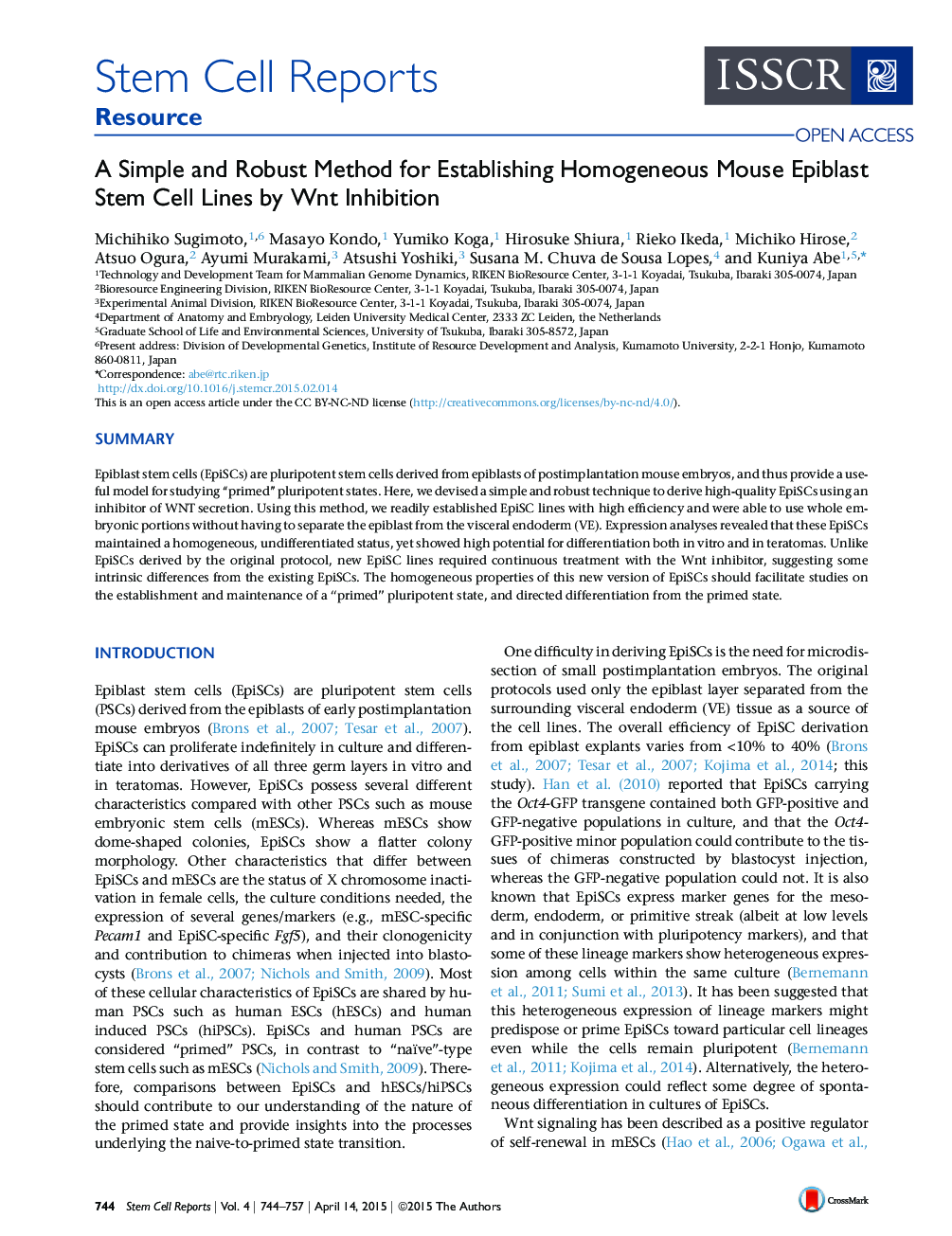| Article ID | Journal | Published Year | Pages | File Type |
|---|---|---|---|---|
| 2093621 | Stem Cell Reports | 2015 | 14 Pages |
•Wnt inhibition (by IWP-2) dramatically increases the efficiency of EpiSC derivation•IWP-2 helps to maintain homogeneous EpiSC cultures by suppressing differentiation•Using IWP-2 to derive EpiSCs does not require the separation of epiblast from VE•New version of EpiSCs should facilitate studies on “primed” stem cells in mammals
SummaryEpiblast stem cells (EpiSCs) are pluripotent stem cells derived from epiblasts of postimplantation mouse embryos, and thus provide a useful model for studying “primed” pluripotent states. Here, we devised a simple and robust technique to derive high-quality EpiSCs using an inhibitor of WNT secretion. Using this method, we readily established EpiSC lines with high efficiency and were able to use whole embryonic portions without having to separate the epiblast from the visceral endoderm (VE). Expression analyses revealed that these EpiSCs maintained a homogeneous, undifferentiated status, yet showed high potential for differentiation both in vitro and in teratomas. Unlike EpiSCs derived by the original protocol, new EpiSC lines required continuous treatment with the Wnt inhibitor, suggesting some intrinsic differences from the existing EpiSCs. The homogeneous properties of this new version of EpiSCs should facilitate studies on the establishment and maintenance of a “primed” pluripotent state, and directed differentiation from the primed state.
Graphical AbstractFigure optionsDownload full-size imageDownload as PowerPoint slide
